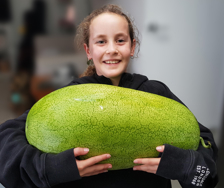Yates Account
Join now
Create a Yates account today!
Sign up to join the Yates Garden Club for monthly e-mails packed with seasonal inspiration, tips for success & exclusive promotions.
Plus if you’re a Garden Club member you can take part in the Yates Growing Community - a blog to share successes, get advice & win prizes in fun challenges along the way!

Forgot password
Enter the email address associated with your account, and we'll email you a new password.

For a long lasting display of summer flowers, Petunias (Petunia spp.) can’t be beaten. They are available in a wide range of colours and varieties, from large flowers to smaller trailing varieties, and are excellent for borders, mass beddings, potted gardens and even hanging baskets.
How to grow petunias in a garden
- Sow seeds into trays of Yates Black Magic Seed Raising Mix. Gently press down and lightly water with a fine mist spray.
- Keep trays in a warm place and retain moisture by covering with glass or plastic cling wrap.
- While the seedlings are growing, choose a sunny spot in the garden and prepare the planting area well by digging in Yates Thrive Natural Blood & Bone with Seaweed.
- Once seedlings have emerged, feed weekly with Yates Thrive Natural Fish & Seaweed+ Plant Food Concentrate. Allow seedlings to grow to about 5 cm before transplanting.
- When transplanting them into your prepared garden bed, ensure seedlings are well spaced – at least 30 to 40 cm apart. Mulch with organic mulch, such as bark chips, woodchip or pea straw and water in well.
- Feed during the growing and flowering season with Yates Thrive Rose & Flower Granular Plant Food. TIP: For an added boost apply Yates Thrive Natural Fish & Seaweed+ Plant Food Concentrate.


How to grow petunias in a pot
- Choose a pot at least 200 mm wide and deep. Position in full sun.
- Fill the chosen pots with quality potting mix, such as Yates Black Magic Seed Raising Mix.
- Sow the seeds directly into the pot by pressing them lightly into the mix and water well.
- Water gently and keep moist through germination period.
- Feed every 1 to 2 weeks during the growing season with Yates Thrive Roses and Flowers Liquid Plant Food. TIP: For an added boost, apply Yates Thrive Natural Fish & Seaweed+ Plant Food Concentrate.
Neptune Shades provides a lush, deep carpet of colour all season, with profuse blooms in an oceanic mix of blues, lilac, coral pink and white.
Growing tips
- After initial flowering, pinch back to encourage compact growth and more flowering.
More Plants
Orange Trumpet Vine
Orange trumpet vine, with its brilliant cascading masses of orange tubular flowers, is one of the most spectacular winter flowering climbers.
Spring Stars
Spring Stars are a versatile addition to any garden with delightful lavender-blue, star shaped blooms.
Flax
Flaxes (Phormium spp.) are highly versatile plants which don't mind swampy or dry conditions. Great for large pots or planted en-masse in garden beds.
Proteas
Not just any old blossom, protea flowers are blooms with attitude. If you can give them full sun and reasonable drainage, proteas will love you.
Recommended products
Yates Black Magic Seed Raising Mix
Specially formulated for trouble-free seed raising in trays (or outdoor seed sowing direclty into the ground) and propagation of cuttings.
Yates Thrive Natural Blood & Bone with Seaweed
A certified organic garden input boosted with NZ Seaweed to gently nourish plants, enrich the soil and encourage a strong healthy root system.
Yates Thrive Rose & Flower Granular Plant Food
Specially formulated to grow all types of flowers. With high potassium for large & abundant flowers, added calcium & iron for stronger flowers.
Yates Thrive Roses & Flowers Liquid Plant Food
Provides your flowers & roses with the balanced nutrients they require for healthy growth and flower production.

















Share
Share this article on social media